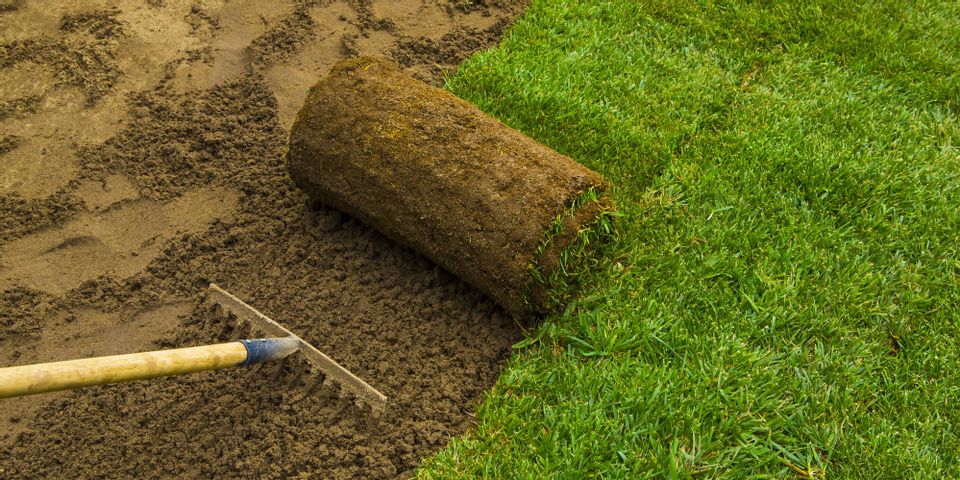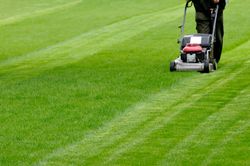
Tifway Bermuda grass is a warm-weather grass that provides a lush, perennial, fine-textured lawn. To keep this turf in good shape, here are some maintenance do’s and don’ts.
Do:
Choose the right conditions.
When installing Bermuda grass, make sure the area receives full sun and that the soil drains well. This type of sod also prefers well-fertilized soil, so start your fertilizer process three weeks into spring when new growth begins to peak.
Stay on schedule.
 Mowing Bermuda grass every three to six days keeps it at optimal heights between ¾ and 1.5 inches. For watering, this sod needs 1 to 1 ¼ inch of hydration per week, unless there’s enough precipitation to meet that standard.
Mowing Bermuda grass every three to six days keeps it at optimal heights between ¾ and 1.5 inches. For watering, this sod needs 1 to 1 ¼ inch of hydration per week, unless there’s enough precipitation to meet that standard.
Remove thatch.
Thatch can accumulate on your lawn and stunt grass growth. Rake any debris sitting on your sod right before peak green season.
Don’t:
Let weeds grow.
Though the sod’s own growth patterns are naturally adept at curbing excess weeds, you can still boost its health with pre-emergence herbicides in spring. Apply it again in the fall for extra protection.
Neglect bare areas.
Any bare areas will detract from your lawn’s appearance. Replant these areas with new sod or plugs, and apply herbicides to stop weeds from interfering with new root growth.
Ignore signs of disease.
As durable as this grass is, diseases can affect it. If you notice straw-colored spots ranging from small dots to larger sections, call your landscaper to stop the spread of disease and replant dying sections.
Serving Kapolei, Mililani, and Hawaii Kai, Alii Turf is Oahu’s top choice when it comes to Bermuda grass and other turf options. The locally owned company provides sod for residential lawns, commercial properties, and even golf courses throughout Hawaii. Call (808) 293-8873 to request a quote today.
About the Business
Have a question? Ask the experts!
Send your question

